Whether you’re newly self-employed or need to send a personal tax return for any other reason, getting to grips with Self Assessment is crucial. It may appear daunting at first, but it’s a relatively easy system to deal with if you follow the rules and retain all necessary information relating to your income and taxes.
Key takeaways
- Register for Self Assessment by October 5 after the tax year to avoid late penalties.
- Use cash-basis accounting for simpler income and expense tracking as a sole trader.
- Keep all Self Assessment records for five years to ensure compliance and facilitate future tax returns.
We answer 24 frequently asked questions about Self Assessment. For a detailed overview of this HMRC tax system, scroll through the post or jump to a specific FAQ from the table below.
What is Self Assessment?
Self Assessment is a system that HMRC (the UK tax authority) uses to collect personal tax from individuals who are self-employed or receive other sources of income that are not reported and taxed ‘at source’ through Pay As You Earn (PAYE).
As the name suggests, the individual taxpayer is responsible for assessing their income, reporting it to HMRC on a tax return, and paying any tax they owe through Self Assessment.
When completing a tax return, the individual must include all sources of income and capital gains they’ve received in a particular tax year from the UK and elsewhere. This provides a complete picture of their financial position during a tax year to ensure any additional income is taxed accordingly.
Who needs to file a Self Assessment tax return?
You must file a Self Assessment tax return with HMRC following the end of the tax year if you:
- are self-employed as a sole trader with a gross annual income above £1,000
- are a partner in a business partnership
- have to pay Capital Gains Tax from selling (or ‘disposing of’) something that has increased in value
- have to pay the High Income Child Benefit Charge
- receive £2,500 or more in commission or cash-in-hand payments
- earn money from renting out a property
- receive more than £10,000 from savings, investments, or dividends
- receive foreign income (including pensions)
- want to claim certain Income Tax reliefs
- want to make voluntary National Insurance contributions (NIC) to fill gaps in your NIC record
- need to report certain pension payments or charges (i.e. money in your pension pots above your annual allowance, unauthorised payments from a pension scheme, or overseas payment charges)
If you’re unsure about your position, HMRC has an online tool you can use to check if you need to send a tax return.
Do I need to register for Self Assessment before sending a tax return?
Yes, if you’re sending a tax return for the first time, you must register for Self Assessment with HMRC beforehand. Most people can do this online, but some may be required to register by post.
- Do I need to register for Self Assessment after I set up a company?
- Self Assessment for directors – explained
- Working from home expenses for limited companies
To register online, you need to sign into your business tax account (or create one) and select ‘Add a tax to your account to get online access to a tax, duty or scheme’.
You’ll need to provide the following details on the registration form:
- name and address
- date of birth
- UK National Insurance number (if you have one)
- telephone number and email address
- date(s) you received the income you need to report
You will also be asked a series of questions about yourself (and your business, if applicable) to explain why you are registering for Self Assessment.
Use HMRC’s tool to check how to register for Self Assessment.
Do shareholders and directors need to register for Self Assessment?
Most company shareholders and directors need to register for Self Assessment to report and pay tax on dividend income, directors’ loans, and expenses.
Are LLP members required to register for Self Assessment?
Self-employed LLP members must register for Self Assessment individually and report their share of business profits to HMRC on a tax return. However, salaried LLP members don’t usually need to register or file a return if they receive all their income through PAYE.
Do I need to register my business partnership for Self Assessment?
If you’re setting up a new general (traditional) partnership, you’re responsible for registering the partnership for Self Assessment. However, you don’t need to do this when you set up a limited liability partnership (LLP) or limited partnership. The business will automatically be registered with HMRC when incorporated at Companies House.
What is the deadline to register for Self Assessment?
The deadline to register for Self Assessment is 5 October after the end of the tax year you are reporting on your tax return.
For example, if you need to send a tax return for income received in the 2025-26 tax year (6 April 2025 to 5 April 2026), you must register for Self Assessment by 5 October 2026.
What is my Unique Taxpayer Reference (UTR)?
Your Unique Taxpayer Reference is a 10-digit number identifying you for Self Assessment tax purposes. HMRC will send it to you by post within 15 days of registering. It may take longer if you live abroad.
You’ll need to provide your UTR to access your online account for Self Assessment, file tax returns, and pay your tax bill.
If you have a limited company, your personal UTR should not be confused with your company’s Unique Tax Reference (also known as a Corporation Tax UTR). These are separate references used for different tax purposes.
How do I file a personal tax return?
You can file a Self Assessment tax return online or by post, with or without professional help from an accountant or tax advisor. It depends on the complexity of your situation and whether you feel confident dealing with your own tax affairs. Filing online is the most popular option because it’s simpler and more efficient. You also get an extra 3 months to file.
- How to file your Self Assessment tax return
- How to check if HMRC has processed your tax return
- 25 financial terms every business owner should know
You need to sign in to your Self Assessment tax account using the Government Gateway user ID and password you received when you registered online. You’ll be asked to enter information about yourself (and your business, if applicable) and answer a series of questions to tailor your return. The online screens will guide you through the process.
You will then complete the main section of the tax return (SA100) and any supplementary pages the system has provided based on your answers to the ‘tailor your return’ questions. These supplementary pages cover things like income from employment, self-employment, property, and capital gains.
Where applicable, you’ll need to enter information about all sources of income, capital gains, expenses, tax reliefs, allowances, and taxable benefits for the tax year you’re reporting. Doing so gives a complete picture of your total annual earnings, ensuring you’re taxed correctly on your additional income.
Once you’ve completed the relevant sections and checked your answers, you can view your tax calculation, save a copy for your records, and submit your tax return to HMRC.
Do I need to use cash-basis accounting for Self Assessment?
Cash-basis accounting is now the default way for sole traders and partners to work out their income and expenses when filing their tax returns. However, you can opt out if you want to use accruals basis (traditional accounting) or can’t use cash-basis accounting.
With cash basis, you only need to declare money when it comes into or leaves your business. This means that, at the end of the tax year, you’ll only pay Income Tax on the money you received during your accounting period.
What is the deadline to file a tax return?
The deadline to file a Self Assessment tax return depends on whether you send it online or by post.
- Paper returns by post – must reach HMRC by midnight on 31 October after the end of the tax year
- Online returns – must reach HMRC by midnight on 31 January after the end of the tax year
For example, a tax return for the 2025-26 tax year, which ends on 5 April 2026, must reach HMRC by 31 October 2026 (paper return) or 31 January 2027 (online return).
Will I receive a reminder from HMRC to file my tax return?
Yes, HMRC will send you a reminder email or letter telling you to complete and file a Self Assessment tax return by the deadline. However, you must not rely on this. Individuals are personally responsible for meeting the filing and payment deadlines of their own accord.
What happens if I miss a Self Assessment deadline?
If you miss the 31 October filing deadline, you can simply send your tax return by 31 January without facing any penalties. However, if you miss the 31 January filing deadline, HMRC will impose the following late filing penalties:
- 1 day late – £100 automatic penalty
- 3 months late – £10 per day for a maximum of 90 days
- 6 months late – the higher of £300 or 5% of the tax you owe
- 12 months late – a further £300 or 5% of the tax you owe (whichever is higher)
HMRC provides an online tool that you can use to estimate your Self Assessment penalty for late tax returns and/or payments.
What taxes do I pay through Self Assessment?
Individuals pay different types of taxes and other deductions through Self Assessment based on their personal circumstances and the income they are reporting. These include:
- Income Tax
- Tax on dividend income
- Class 4 National Insurance contributions
- Voluntary Class 2 and Class 3 National Insurance contributions
- Student Loan and Postgraduate Loan repayments
- Capital Gains Tax
Since April 2024, self-employed individuals are no longer required to pay Class 2 National Insurance on their profits. If you have profits of at least £6,845 per year (the NIC Small Profits Threshold), Class 2 contributions are now ‘treated as paid’. This means you will continue to receive access to contributory benefits, including the State Pension.
If your annual profits are under £6,845 or you need to fill gaps in your National Insurance record, you can pay voluntary Class 2 contributions to get access to contributory benefits.
When will I receive my tax bill?
When you complete your Self Assessment tax return online, you can view your tax calculation (SA302) before submission. This will show your total taxable income, any allowances and relief you have, how much you owe for the tax year, any payments on account due, and how HMRC worked this out.
Once you file your tax return online, your tax calculation will be available to view in your online account within 72 hours. However, if you submit a paper return, you’ll receive your tax calculation by post.
HMRC will also send you a Self Assessment statement online or by post. This is your tax bill, which will show:
- the tax you owe at the time the statement is sent
- payments on account due
- any payments you’ve made (these will appear as ‘CR’ on the statement)
- any outstanding amounts (e.g. from previous tax years or interest)
- your balancing payment
After filing your tax return, no exact timeframe is given for receiving your Self Assessment tax bill. However, if you’ve completed your return correctly, you should know how much tax you must pay.
If you file your tax return late or close to the deadline, you may not receive your Self Assessment statement before the payment deadline.
What’s the deadline for paying my tax bill?
The deadlines for paying your Self Assessment tax bill are usually:
- midnight on 31 January – for the tax you owe for the previous tax year and (if applicable) your first ‘payment on account’
- midnight on 31 July – for your second payment on account (if applicable)
See below for information on payments on account.
What are payments on account?
Payments on account are advance payments made twice yearly towards your next Self Assessment tax bill. Each payment is usually half of your previous year’s tax bill.
You’ll be required to make payments on account unless:
- your previous tax bill was less than £1,000, or
- you paid more than 80% of the tax you owed last year outside of Self Assessment (e.g. through your tax code or because your bank had already deducted interest on your savings)
HMRC calculates payments on account based on your estimated earnings. This is usually the amount you reported on your last tax return.
The first payment on account is due by 31 January before the end of the tax year. The second payment on account is due by 31 July after the end of the tax year. If you earn more than the estimated amount, you’ll also have a balancing payment due by 31 January the following year.
For example, if you need to make payments on account for the current 2025-26 tax year, you must pay:
- your first payment on account by 31 January 2026
- your second payment on account by 31 July 2026
- any balancing payment you owe by 31 January 2027
People who are new to Self Assessment are often caught out by payments on account. Bear this in mind and ensure you have enough money to cover the advance payments—otherwise, you will incur late payment penalties and interest.
How do I pay my Self Assessment tax bill?
You can pay your Self Assessment tax bill in the following ways:
- using the HMRC app to pay through your bank’s app or via online banking
- through your online bank account
- Faster Payments via online or telephone banking
- Direct Debit
- CHAPS
- Bacs
- online by debit or corporate credit card
- at your bank or building society using a paying-in slip from HMRC
- sending a cheque by post
If preferable, you can set up a Budget Payment plan to pay weekly or monthly instalments towards your next bill (rather than making a one-off payment on or near the due date).
You can also pay through your PAYE tax code if:
- your bill is less than £3,000
- you already pay tax through PAYE (e.g. as an employee or a director, or if you receive a company pension)
- you submit your paper tax return by 31 October or your online tax return by 30 December
The tax will be deducted from your salary or pension in equal instalments over 12 months, along with your usual tax deductions.
What happens if I can’t pay my tax bill?
You must contact HMRC as soon as possible if you miss the payment deadline or can’t pay your Self Assessment tax bill on time.
You may be able to set up a ‘Time to Pay’ arrangement. This is a payment plan that allows you to pay your tax bill in instalments over a certain number of months.
However, you will still incur late payment penalties and interest until the bill is paid in full.
What are simplified expenses?
Simplified expenses are optional flat-rate expenses you can claim on your tax return instead of calculating and claiming your actual business costs. They are available to sole traders and business partnerships (provided that none of the partners are companies).
You can use these flat-rate expenses for vehicle mileage, working-from-home costs (if you work at least 25 hours a month from home), and living at your business premises (e.g. a guesthouse, bed and breakfast, or small care home).
Simplified expenses can be beneficial and convenient for some self-employed individuals (particularly those with limited overheads) because you don’t need to produce evidence of your expenses (but should still keep records of them).
However, it’s always worth comparing against your actual business costs to ensure you’re not missing out. If you have significant expenses, you’ll save more in tax by claiming the exact costs. You can do this using HMRC’s simplified expenses checker.
If you’re a company director, you may be able to claim simplified expenses through Self Assessment if you are also an employee of the company, work from home, and have not received a reimbursement from the company. To do so, one of the following must apply:
- there are no appropriate facilities available for you to perform your job on your employer’s premises
- your job requires you to travel an unreasonable distance to and from your employer’s premises daily
As a director and employee, you cannot claim these expenses through Self Assessment if you simply choose to work from home.
How do I claim a tax refund?
If you’ve paid too much tax, you can claim a tax refund from HMRC. How you claim depends on whether the overpayment was from a Self Assessment tax return or bill, employment, foreign income, or something else. You can use HMRC’s online tool to check how to claim a tax refund.
What Self Assessment records do I need to keep?
If you’re a sole trader or partner in a business partnership, you must keep records of all business income, business expenses, and personal income. You’ll need this information to complete your tax returns.
You don’t need to send these records to HMRC with your tax return, but you must retain them for at least 5 years after the 31 January filing deadline of the relevant tax year. For example, if you send a tax return for the 2025-26 tax year by 31 January 2027, you must keep all related records until at least 31 January 2032.
You can store your records on paper or digitally. However, from April 2026, HMRC will phase in Making Tax Digital for Income Tax, making it mandatory for sole traders and landlords to maintain digital records.
Where do I find my SA302 tax calculation in my tax account?
An SA302 form is a Self Assessment document that provides a detailed breakdown of your full tax calculation for a specific tax year. It shows your profit, all deductions applied (tax, National Insurance, pension contributions, Student Loan, etc), and your payment deadlines.
If you’re self-employed, you may have to provide an SA302 and a tax year overview as evidence of earnings when applying for a mortgage or personal loan.
To get your SA302 tax calculation, follow these steps:
- Sign in to your HMRC online account
- Click on the ‘Self Assessment’ section under your name and UTR
- Click on ‘More details about your Self Assessment returns and payments’
- Select ‘Get SA302 Tax Calculation for tax year 20XX to 20XX’ (the tax year of your most recently filed return)
- Scroll to the bottom and click ‘Print your full calculation’, then choose to print and/or save it as a PDF
For previous years, scroll down to ‘Previously filed returns’ and click ‘Get your SA302’ under the relevant tax year(s). These calculations are available for the last 4 years of tax returns.
How do I stop Self Assessment?
If you stop trading as a sole trader or you decide to end or leave a business partnership, you must tell HMRC that you’re stopping self-employment. To do so, you need to complete an online form through your business tax account.
You must also inform HMRC if you no longer need to send Self Assessment tax returns for any other reason (e.g. you’ve stopped renting out property). You can do this by:
- completing an online form in your tax account
- online using HMRC’s digital assistant
- by phone or post
If HMRC agrees, you’ll receive a letter confirming that you don’t need to file a return.
Thanks for reading
Do you have any other questions about Self Assessment that you’d like us to answer? Leave a comment below and we’ll get back to you as soon as possible.
Explore the Rapid Formations Blog for more small business advice and limited company guidance.

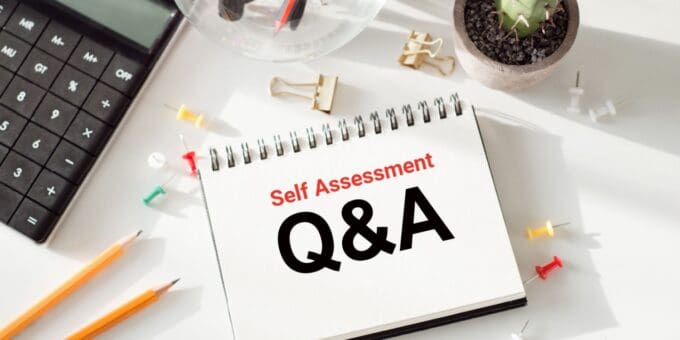









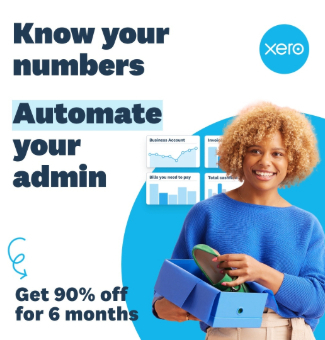



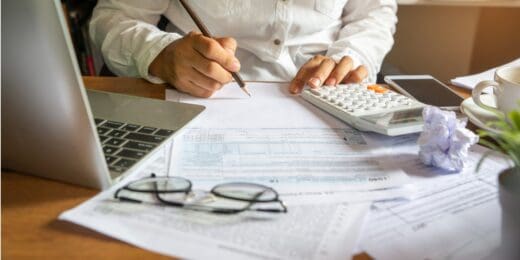
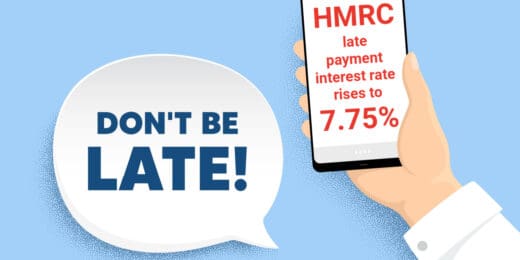
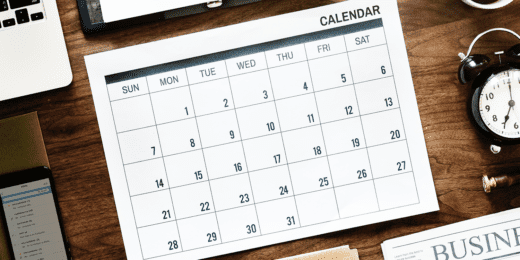
Join The Discussion
Comments (2)
Thanks for the article! I will implement this self assessment knowledge in my own financial services UK business.
Thank you for your comment. It’s great to hear you will be able to implement this self assessment knowledge in your own business.
Kind regards,
The Rapid Formations Team